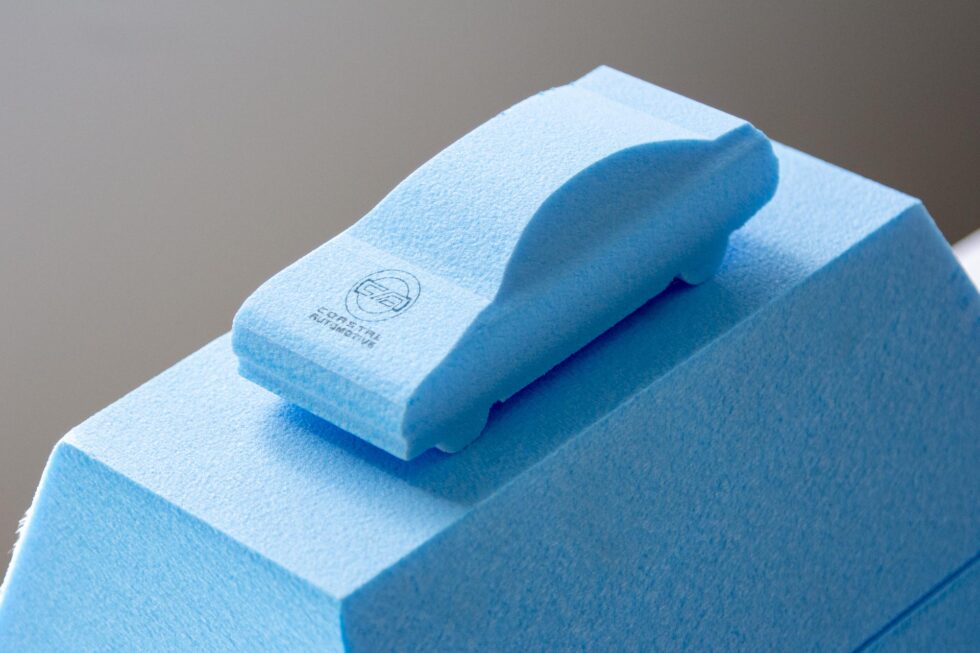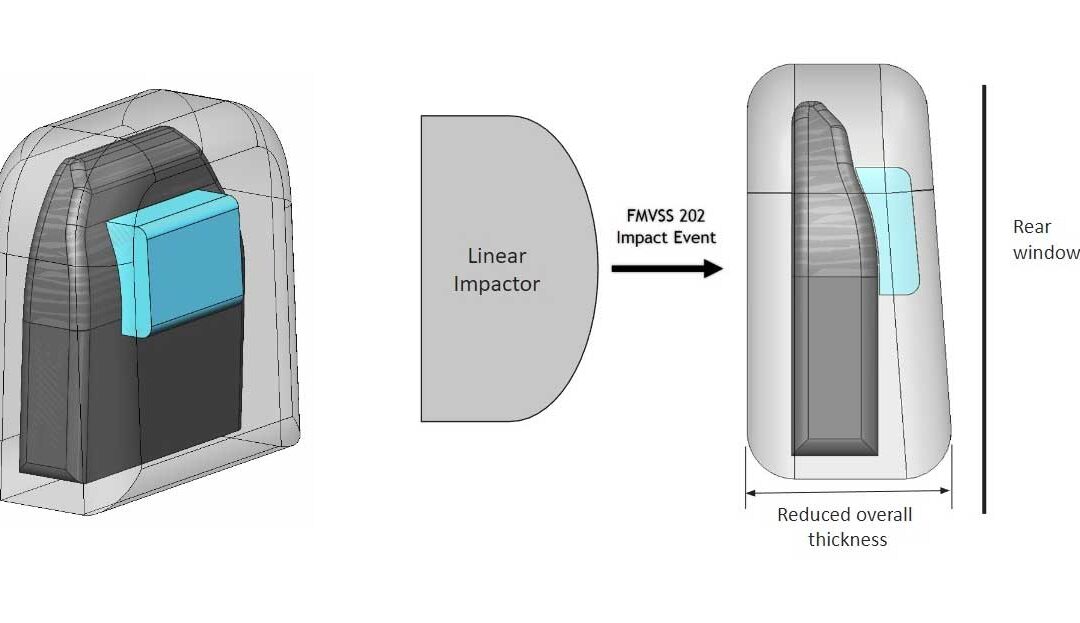Known in the automotive safety industry for leading-edge energy management solutions, Coastal Automotive, with manufacturing facilities in Holland, MI, is making headway in another arena: headrests.
Headrests became mandatory in the United States for all new cars sold after January 1, 1969. Initially introduced as optional equipment for passenger comfort, keeping time with automotive technology, headrests have evolved with a much more significant focus on passive safety. Additional rules regarding headrest safety have been introduced since the initial legislation, including minimum height requirements, distance limits related to the back of the occupant’s head and the front of the head restraint, as well as strength and dynamic compliance requirements.

Expertise and adaptability
Using its industry-leading engineered foam solution, IMPAXX™, the team at Coastal has provided its customers with proven solutions to their impact mitigation needs, solutions that are cost effective and durable.
Luis Olmos González, principal engineer at the company, points out that while Coastal Automotive is widely known for its headliner impact solutions, the Coastal team is now also recognized for its ability to provide viable options for a multitude of applications—in particular headrests.
With the need for exacting precision and tight tolerances, automotive manufacturers are often hesitant to move away from known suppliers for their impact solutions. Compliance issues, technical challenges and existing relationships make it difficult to make inroads with new customers, but it can take only one successful project to change perceptions.

Experienced and trusted leadership
Having spent over 20 years working in the automotive industry, including positions with both GM and Ford, Olmos has developed not only significant and diverse experience working in both the CAE (Computer-Aided Engineering) and the physical application areas of product development. He has also stewarded important relationships, one of which led to him being approached by a colleague in the field seeking a solution for headrest impact absorption.
Trey Case, a design release engineer (and Central Michigan University alum) on Olmos’s team, has been in charge of all of the headrest designs and leveraged his experience with the highly advanced and consistent performance properties of IMPAXX™ to help serve the new client’s needs (a large automotive OE), which were challenging. The decidedly tight parameters, in terms of physical space within a headrest design, coupled with the urgency of the project—the client was looking for a relatively quick turnaround from quote to prototype—allowed Coastal to demonstrate its ability to generate precise and test-worthy prototypes in hours vs. weeks.

According to Case, there has been a significant increase in market activity in the headrest category over the last six months. “Virtual validation–meaning testing performed through CAE technology-is also growing in focus, given its cost, sustainability and rapid turnaround time advantages. Coastal Automotive has the capabilities to outperform expectations, whether it’s through virtual or physical testing. Through our rapid development and production protocols, we can provide a viable, physical prototype in hours,” expressed Case.
Design challenges and solutions
When designing an energy absorption solution for headrests, “whiplash” mitigation is a top priority. Whiplash in automobile accidents typically occurs when a car is rear-ended by another vehicle, causing passengers in the rear-ended car to experience “forceful overextension of the neck beyond its typical range of motion. The movement is rapid, like a whip”. While not exclusive to rear impact events, whiplash is most commonly associated with those types of automobile crashes. According to the Spine Research Institute of San Diego, an average of 3 million whiplash injuries occur each year, which underlines the critical importance of a light-weight, energy management solution to protect passengers’ health.

The FMVSS 202 nomenclature in the diagram above refers to the category of Federal Motor Vehicle Safety Standards dealing with front impact headrest standards. The graphic also highlights one of the overarching benefits of designing with IMPAXX™. The IMPAXX™ sample in blue above, because of its high energy absorption efficiency, ended up being much smaller than any traditional EA foams and would be wrapped in a PU foam accommodating enough gap within the rear of the headrest. IMPAXX™ allows car manufacturers to streamline the profiles of headrests without compromising on safety, thus maximizing the available occupant space and lowering weight impacts on fuel consumption and capacity.
The Coastal Automotive Advantage
Not only do Olmos and his team often have to account for rear-impact scenarios, where the energy absorption solution addressed the impact with the headrest of a front cabin occupant, but also they have to consider and engineer for a rear seat passenger impacting the headrest of the seat in front of him or her. Front impact injuries, with regards to headrests, are most frequently associated with passengers in the rear seat being propelled forward, their heads impacting the headrest of the seat in front of them. Regardless of each customer’s unique design, budget and specification needs, the Coastal engineering team, with IMPAXX™ has the resources and protocols to design and produce with precision and high level efficiency, exceeding performance expectations.
Coastal Automotive is staying on the cutting edge of automotive safety technology, with strong and experienced leadership. The foray into applying their expertise in areas beyond just headliners displays the versatility and adaptability of this industry-leading manufacturer.